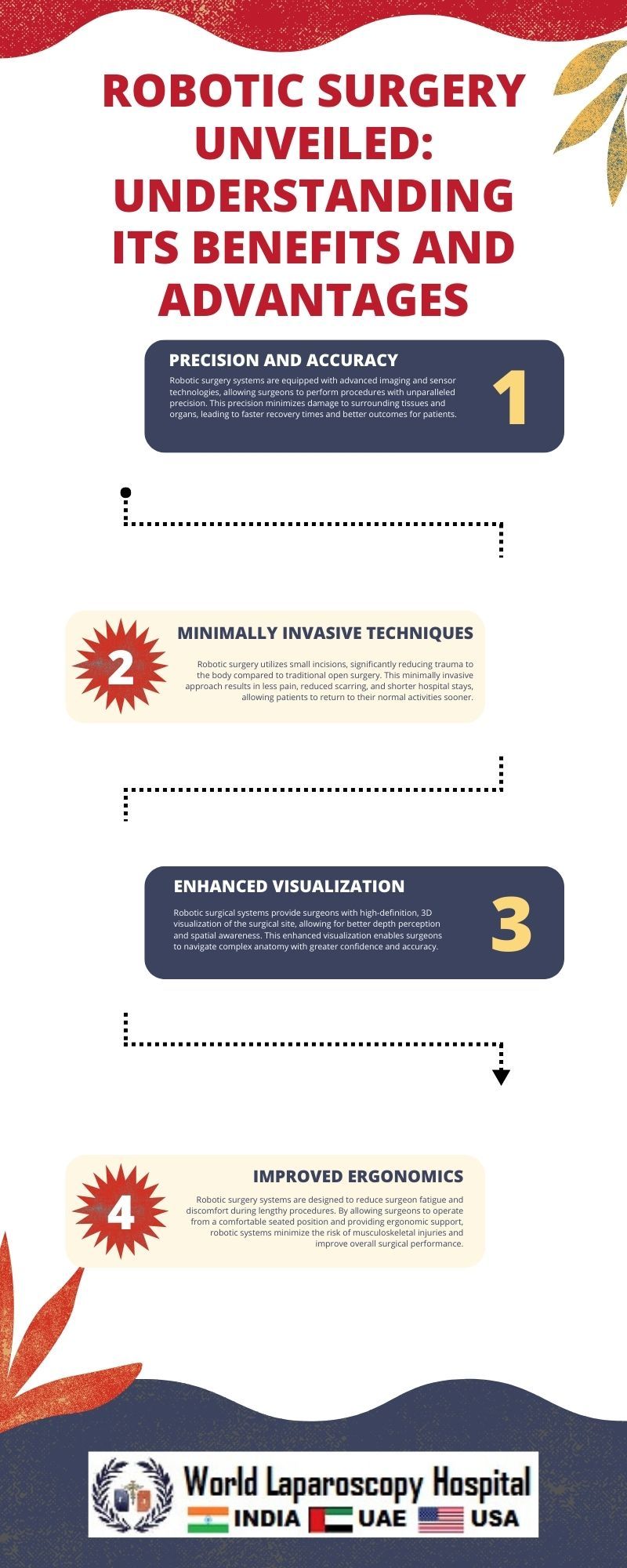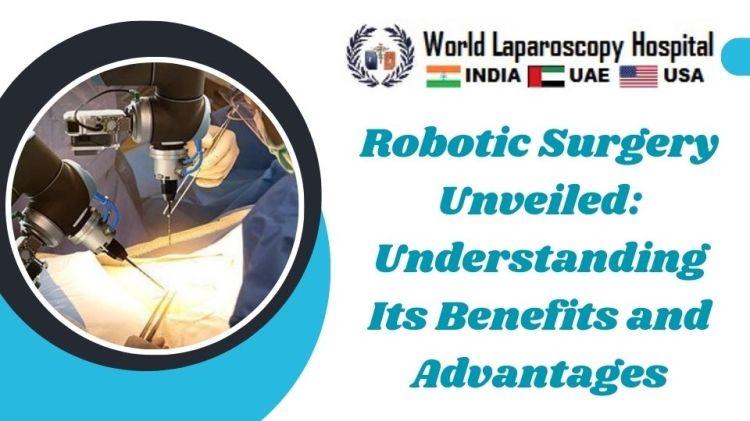Robotic Surgery Unveiled: Understanding Its Benefits and Advantages
Introduction
In the realm of modern medicine, robotic surgery stands as a testament to the integration of advanced technology and surgical expertise. With its precision, flexibility, and ability to minimize invasiveness, robotic surgery has rapidly transformed various medical procedures, offering both patients and surgeons a plethora of benefits and advantages. This article aims to delve deep into the realm of robotic surgery, exploring its evolution, mechanisms, applications, benefits, challenges, and the future landscape it promises to shape.

Evolution of Robotic Surgery
The inception of robotic surgery traces back to the late 20th century, with the development of early prototypes such as the PUMA 560, which was utilized for neurosurgical procedures. However, it wasn't until the late 1990s that the da Vinci Surgical System, developed by Intuitive Surgical, revolutionized the field. The da Vinci System introduced a minimally invasive approach, utilizing a magnified 3D high-definition vision system and tiny wristed instruments controlled by the surgeon. Since then, robotic surgery has witnessed exponential growth, with advancements in technology enhancing its capabilities and expanding its applications across various medical specialties.
Mechanisms of Robotic Surgery
At the heart of robotic surgery lies a sophisticated system comprising several components. The da Vinci Surgical System, for instance, consists of a surgeon console, patient cart, vision cart, and robotic arms equipped with surgical instruments. The surgeon, seated at the console, controls the robotic arms with hand and foot pedals, translating their movements into precise actions within the patient's body. The system's high-definition camera provides a magnified, stereoscopic view of the surgical site, enhancing visualization and accuracy. Additionally, the robotic arms offer greater dexterity and range of motion compared to traditional laparoscopic instruments, enabling intricate maneuvers with minimal tissue damage.
Applications of Robotic Surgery
Robotic surgery has permeated various medical specialties, offering solutions for a wide range of procedures. In urology, it is commonly employed for prostatectomies, nephrectomies, and cystectomies, allowing for precise removal of diseased tissue while preserving surrounding structures. In gynecology, robotic-assisted hysterectomies and myomectomies are performed with enhanced precision and reduced complications. Cardiothoracic surgeons utilize robotic systems for mitral valve repairs, coronary artery bypass surgeries, and thoracic procedures, minimizing trauma and facilitating quicker recoveries. Moreover, robotic surgery finds applications in general surgery, colorectal surgery, otolaryngology, and even in pediatric procedures, showcasing its versatility and adaptability across diverse medical disciplines.
Benefits and Advantages of Robotic Surgery
The adoption of robotic surgery offers manifold benefits to both patients and surgeons alike. For patients, the minimally invasive nature of robotic procedures translates to smaller incisions, reduced blood loss, and faster recovery times compared to traditional open surgeries. Moreover, the enhanced precision and visualization provided by robotic systems minimize the risk of complications and improve clinical outcomes. Patients experience less postoperative pain and require shorter hospital stays, leading to improved overall satisfaction and quality of life. From a surgical standpoint, the ergonomic design of robotic consoles reduces surgeon fatigue and hand tremors, enabling prolonged procedures with greater accuracy. The intuitive controls and motion scaling feature of robotic systems enhance the surgeon's capabilities, allowing for precise manipulation of instruments in confined spaces. Furthermore, the integration of robotic surgery with telemedicine facilitates remote consultations and surgical mentoring, fostering collaboration and knowledge exchange among healthcare professionals.
Challenges and Limitations of Robotic Surgery
Despite its numerous advantages, robotic surgery is not without its challenges and limitations. One major concern is the steep learning curve associated with mastering robotic techniques, requiring surgeons to undergo specialized training and certification. The initial capital investment and maintenance costs of robotic systems can be prohibitive for some healthcare institutions, limiting access to this technology in certain regions. Additionally, concerns regarding patient safety and device reliability have been raised, necessitating stringent regulatory oversight and continuous quality assurance measures. Moreover, the lack of tactile feedback in robotic procedures poses a challenge, as surgeons rely solely on visual and auditory cues to assess tissue characteristics and instrument manipulation. Furthermore, the dependence on technology introduces the risk of technical failures or system malfunctions, potentially compromising patient outcomes and surgical efficiency. Addressing these challenges requires ongoing research, education, and collaboration within the medical community to optimize the utilization of robotic surgery while ensuring patient safety and quality of care.
Future Directions and Innovations in Robotic Surgery
Looking ahead, the future of robotic surgery appears promising, with ongoing innovations poised to further enhance its capabilities and expand its applications. Advancements in artificial intelligence and machine learning hold the potential to automate certain aspects of surgical procedures, optimizing workflow efficiency and standardizing surgical outcomes. The integration of augmented reality and virtual reality technologies into robotic systems could enhance surgical planning and intraoperative navigation, improving precision and patient safety. Furthermore, the development of miniaturized robotic platforms and flexible instruments may enable access to previously inaccessible anatomical regions, paving the way for new minimally invasive approaches. Collaborative research efforts are underway to explore the feasibility of remote telesurgery and surgical robotics in austere environments, aiming to improve access to surgical care globally. As robotic technology continues to evolve, it is poised to revolutionize healthcare delivery, ushering in a new era of precision medicine and personalized surgical interventions.
Conclusion
In conclusion, robotic surgery represents a transformative paradigm shift in modern healthcare, offering unparalleled precision, flexibility, and patient-centric care. From its humble beginnings to its current ubiquity across various medical specialties, robotic surgery has redefined the landscape of surgical practice, empowering surgeons to perform complex procedures with enhanced efficacy and safety. While challenges and limitations persist, ongoing advancements and innovations in robotic technology hold the promise of overcoming these hurdles and unlocking new frontiers in surgical excellence. As we venture into the future, the integration of robotic surgery into mainstream clinical practice is poised to revolutionize healthcare delivery, improving outcomes and transforming the lives of patients worldwide.



